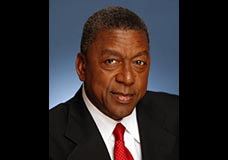![]()
![]()
![]()
![]()
![]()
![]()
 At the March on Washington Aug. 28, 1963, Martin Luther King Jr. began his speech by declaring, “Five score years ago, a great American, in whose symbolic shadow we stand, signed the Emancipation Proclamation. This momentous decree came as a great beacon light of hope to millions of Negro slaves who had been seared in the flames of withering injustice. It came as a joyous daybreak to end the long night of captivity….In a sense we have come to our nation’s capital to cash a check.”
At the March on Washington Aug. 28, 1963, Martin Luther King Jr. began his speech by declaring, “Five score years ago, a great American, in whose symbolic shadow we stand, signed the Emancipation Proclamation. This momentous decree came as a great beacon light of hope to millions of Negro slaves who had been seared in the flames of withering injustice. It came as a joyous daybreak to end the long night of captivity….In a sense we have come to our nation’s capital to cash a check.”
In 2013 the U.S. commemorates two events that changed the course of the nation—the 1863 Emancipation Proclamation and the 1963 March on Washington. Standing as milestone moments in American history, these achievements were the culmination of decades of struggles by individuals—both famous and unknown—who believed in the American promise that this nation was dedicated to the proposition that “all men are created equal.” Separated by 100 years, they are linked together in a larger story of freedom and the American experience.
To commemorate these two pivotal achievements, the Smithsonian’s National Museum of African American History and Culture, in collaboration with the Smithsonian’s National Museum of American History, is presenting an exhibition that explores the historical context of these two events, their accomplishments and limitations and their impact on the generations that followed.
“Changing America: The Emancipation Proclamation, 1863 and The March on Washington, 1963” will be on view in the NMAAHC Gallery from Dec. 14 through Sept. 15, 2013. The gallery is located in the National Museum of American History. Featuring historic photographs, paintings and new film footage, the exhibition will be accompanied by a new website and a series of public programs designed to examine the social and political currents that shaped these events.
“It is an exhibit that tells a profound story about people changing, pushing and expanding the meaning of democracy in America that remains relevant today,” said associate curator Nancy Bercaw. Among the artifacts on display will be:
- The inkstand used by President Abraham Lincoln in 1862 to draft a document “giving freedom to the slaves of the South,” which later became the Emancipation Proclamation
- A rare copy of the 13th Amendment to abolish slavery, bearing Lincoln’s signature and once owned by Speaker of the House Schuyler Colfax (1863–1869), a lifelong abolitionist who helped push the resolution through Congress (on loan from David Rubenstein)
- Lincoln’s top hat worn to Ford’s Theatre on the night he was assassinated, April 14, 1865
- Items depicting slavery and resistance, including a whip, a runaway slave poster with reward information, a bible belonging to Nat Turner, who led an 1831 slave rebellion in Virginia, and a shawl given to abolitionist Harriet Tubman by Queen Victoria
- Ten shards of stained glass from the 16th Street Baptist Church in Birmingham, Ala., where four young black girls were killed in an explosion
- The guitar played by singer Joan Baez at the 1963 March on Washington
- Pen used by President Lyndon Johnson to sign the Civil Rights Act of 1964
- Various objects from the March on Washington, including organizing documents, protest signs, platform passes for speakers and guests, buttons, a marshal’s armband and a map of the National Mall area
“When you look at the objects from these two great freedom struggles and think about the stories they reveal, you cannot help but be inspired,” said Harry Rubenstein, co-curator of the exhibition.
“America’s promise of freedom is filled with contradiction,” said Lonnie G. Bunch III, founding director of NMAAHC and co-curator of the exhibition. “Perhaps no people understood this more than the 4 million enslaved Africans living in the United States before 1863. Through their actions, large and small, enslaved people and abolitionists worked toward freedom for more than 200 years. Move forward to 1963 and the March on Washington, and you see a coalition of people and organizations continuing the pursuit of liberty and equality for all. This is a shining moment in America’s story.”






